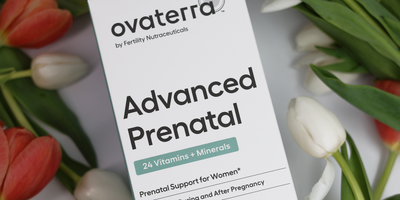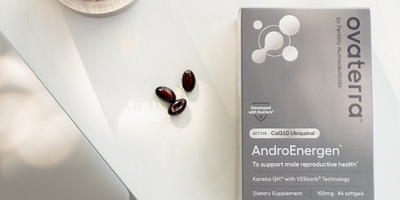Last updated: March 1, 2023
Last month, we featured 4 female scientists who made significant contributions to reproductive sciences. Today, as we begin Women's History Month, let's take a look at 4 more women who are currently pushing the boundaries of what’s possible. Employing different methods from super high-resolution imaging to 3D printing, their work has practical importance for fertility and reproduction.
Evelyn Telfer: Growing Immature Oocytes to Full Maturity in Vitro
Evelyn Telfer, a British reproductive biologist at University of Edinburgh, led the team that succeeded in growing human primordial follicles (immature oocytes) to full maturity outside the body in 2018.
Her success has implications for fertility preservation for young cancer patients, especially pre-pubertal girls. Currently, young cancer patients have pieces of their ovaries surgically removed and cryopreserved before cancer treatments that can harm their fertility.
When they are ready to start a family, these frozen ovaries are implanted back in their body to start growing eggs, but this isn’t always ideal: The procedure is invasive, and the re-implanted ovarian tissue may harbor residual cancer cells.
With Telfer’s technique of maturing very immature eggs in the lab, it may be possible instead to grow primordial follicles from the preserved ovarian tissue, fertilize them with sperm and transfer the resulting embryos to the uterus. The same technique could be used to improve IVF outcomes for women whose eggs are resistant to ovarian stimulation and remain immature.
Teresa Woodruff: Oncofertility and a 3D-Printed Ovary
Teresa Woodruff, a molecular biologist currently at Michigan State University, is best know for coining the term oncofertility, referring to the multidisciplinary field that draws from oncology and reproductive medicine to expand fertility options for cancer survivors. In this realm, she led a team that developed a system that metabolically supports a full 28-day female reproductive cycle outside of the body.
In 2018, Woodruff’s team also developed a 3D-printed “ovarian prosthetic” in mice, which may help future cancer survivors build a family after fertility-damaging treatments. Her basic science work has been combined with her organizational work in setting up the Oncofertility Consortium, an interdisciplinary team of oncologists, reproductive endocrinologists, policy makers and others working together to improve fertility prospects for cancer survivors.
Woodruff also demonstrated that zinc played an important role in the regulation of oocyte maturation, as well as fertilization. At the moment of fertilization, the human egg is activated by an enzyme from the sperm. Woodruff’s team showed that this activation results in a phenomenon called “zinc spark,” and that the size of this spark was a direct measure of egg quality – and its potential to develop into a healthy embryo with a good embryo grade.
Ana-Katerina Hadjantonakis: Tracing Every Cell's Journey from Fertilization to Gestation
Ana-Katerina Hadjantonakis, an American developmental biologist at Memorial Sloan Kettering Institute, works with computational biologists and uses high-resolution quantitative imaging to understand the mechanisms that drive cell differentiation and growth - how our cells become what they become, and how they organize themselves into specific tissues.
While her research is performed at a cancer research institute with the primary purpose of fueling cancer research, her work in mouse embryos and pluripotent stem cells have expanded our understanding of how embryos develop.
In a 2019 article in the journal Nature, Hadjantonakis’ team traced every single cell’s journey from the moment of fertilization to mid-gestation. One of the most striking discoveries changed our understanding of the relationship between the embryo and the placenta. We’d thought that placenta was merely a supporting structure for the developing embryo with no relevance to our adult lives; however, Hadjantonakis’ tracking at the single-cell level revealed that cells in our adult bodies are a mixture – or a “mosaic” – of the embryonic cells and the cells from the placenta.
This discovery not only rewrote the fundamental understanding of how we form as humans, but also transformed the way we think of the placenta as a time-limited support structure during pregnancy.
(Bonus: The single-cell resolution images her laboratory uses to understand the intricate mechanisms of cell differentiation are breathtakingly beautiful. You can view a few of them here and here.)
Magdalena Zernicka-Goetz: Generating Embryos from Stem Cells
Magdalena Zernicka-Goetz, a stem cell biologist currently at California Institute of Technology, uses stem cells to understand molecular and cellular mechanisms that drive differentiation of cell lines, and how cells organize into embryos and organs.
In the early stages of development, embryos are flexible – their cells are undifferentiated, capable of developing into multiple types of cells – but as they develop, the fate of cells become more fixed. Her lab has identified a number of regulatory genes that guide cells’ journey toward specification.
Perhaps the most well-known of Zernicka-Goetz’ work, the creation of implantation-ready embryos from stem cells rather than from egg and sperm, was reported in the journals Nature Cell Biology in 2018 and Developmental Cell in 2019.
Her team established an in vitro culture system that extended the pluripotent conditions of the cells and coaxed mouse embryonic stem cells into organizing themselves into a blastocyst-like structure. (Blastocysts, in humans, are the embryos after about 5 days of fertilization, with a clear structure of trophectoderm on the outside - which will become the placenta – and the inner cell mass – which will become the baby.) These blastocyst-like structure had all the distinct cell lines of a healthy embryo, and were capable of implantation.
Women at the Frontiers of Science - and Sparking the Joy of Science
There is certainly a theme here. One of the current important frontiers of reproductive sciences is to understand the intricacies of oogenesis (how oocytes develop) and embryogenesis (how embryos develop) at the genetic and cellular level, and applying the new concepts to manipulate or even replicate the process to expand the possibilities of reproduction inside and outside of our bodies. These four female scientists are a prime example of this intriguing frontier.
While most of these developments are still years away from being distilled to actionable fertility tips or even applicable in clinical settings, we are excited, both for the practical possibilities and for the sheer joy of science – and hope you are, too.
Please reach out with questions. We are with you.












